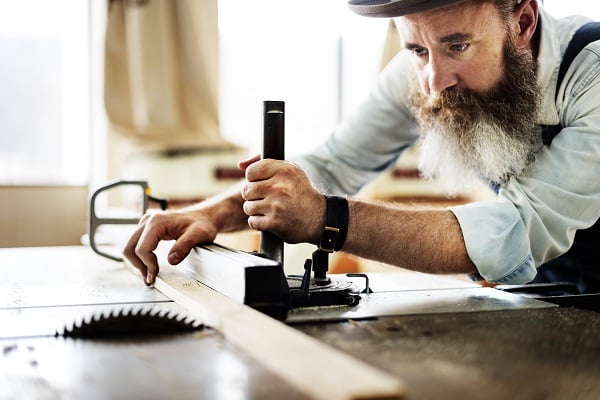Embarking on home improvement projects often comes with the expectation that each new upgrade will be a surefire investment, increasing the property’s value and market appeal. Yet, this is not a guaranteed outcome. This article is here to take an in-depth look at the realm of home enhancements, shedding light on those popular home upgrades that don’t add value in the way one might expect. It serves as a guide for discerning which projects to pursue for pleasure versus profit, ensuring homeowners are well-informed before they commit time and resources to changes that may not pay off in the long run.
Contents
High-End Kitchen Renovations

The kitchen, often referred to as the heart of the home, is a common starting point for renovations. Homeowners pour thousands into high-end countertops, state-of-the-art appliances, and custom cabinetry in hopes of crafting a gourmet workspace. However, the return on such a hefty investment is not always proportionate. The specific tastes of a homeowner can significantly differ from those of potential buyers, who may not value the premium paid for designer brands or marble countertops. Additionally, technology evolves rapidly, and today’s top-market appliance could become tomorrow’s outdated gadget, making the investment a depreciating asset.
Instead of a full-scale kitchen transformation, focusing on minor updates can be more beneficial. Replacing dated hardware, opting for a fresh coat of paint, or upgrading to energy-efficient appliances can refresh the space without the daunting price tag. These subtle changes can modernize the kitchen without alienating potential buyers who might not share the same vision for a culinary paradise.
Extensive Bathroom Overhauls

Luxurious bathroom retreats can seem like a necessity in a world where relaxation and self-care are highly valued. Homeowners might be tempted to install jetted tubs, imported tiles, and high-tech toilets to create a spa-like atmosphere. However, such extensive overhauls can be costly, and the expected increase in home value may not align with the actual market response. Buyers often look for functional, well-maintained spaces rather than opulent showpieces that reflect another person’s lifestyle.
A smarter approach is to invest in updates that improve the bathroom’s functionality and aesthetic appeal without going overboard. Consider replacing outdated fixtures, re-grouting tile, or adding a fresh coat of paint. These improvements can enhance the bathroom’s appeal without the risk of over-customization, which could deter potential buyers who are more interested in the home’s practical features.
Over-The-Top Landscaping

A beautifully landscaped yard can make a powerful first impression. However, intricate designs with exotic plants and elaborate features can be seen as a high-maintenance burden rather than an asset. While a well-manicured garden can complement a home’s exterior, an over-designed landscape may require a level of upkeep that is daunting to future buyers. The personal taste that dictates the choice of plants and layout might not resonate with everyone, potentially making the property less appealing.
Homeowners would be wise to aim for curb appeal that is both attractive and manageable. Opting for native plants that require less care, creating simple yet elegant garden beds, and ensuring the lawn is healthy and neatly trimmed can make the outdoor space inviting without overwhelming prospective buyers with upkeep concerns.
Personalized Paint Jobs And Wallpapers

Bold wall colors and distinctive wallpaper patterns allow homeowners to express their unique style. However, when it comes time to sell, these personalized choices can be a drawback. Potential buyers may be put off by the idea of having to repaint or remove wallpaper, especially if the existing décor is particularly vibrant or patterned. What may have been a fun or trendy choice at the time can inadvertently narrow the market for your home.
Neutral tones offer a blank canvas for buyers to envision their own furnishings and decor. Sticking to a more subdued palette can make the space feel larger, brighter, and more inviting. It also allows potential buyers to focus on the home’s strengths, such as its layout and natural light, rather than getting distracted by the current owner’s color choices.
DIY Projects And Craftsmanship

The rise of home improvement shows, and tutorials has empowered many homeowners to tackle renovations themselves. While this can be cost-effective and provide a sense of accomplishment, DIY projects often lack the polished finish that professionals deliver. This can be particularly problematic when the workmanship is under scrutiny from potential buyers. Even minor imperfections in tiling, trim work, or paint can signal to buyers that the home may have deeper, unseen issues. Furthermore, personal touches that veer too far from mainstream appeal can make a property less attractive on the market.
Before embarking on a DIY renovation, it’s crucial to assess skill levels against the project’s complexity. For tasks that require a high degree of precision or expertise, such as electrical work or plumbing, hiring a professional is often the best route. Not only does this ensure the job is done correctly, but it also avoids the potential for costly mistakes that can arise from inexperience. In the long run, the investment in professional work often pays off by preserving or enhancing home value.
Wall-To-Wall Carpeting

Wall-to-wall carpeting was once the hallmark of luxury in home design, but its popularity has waned in favor of hardwood and tile floors. Carpets can show wear and tear easily, trap odors, and require regular professional cleaning to maintain their appearance. Additionally, the trend toward more sustainable and hypoallergenic home environments has made carpeting less desirable. Buyers today often view carpet as a feature that will require replacement, which can inadvertently decrease the home’s perceived value.
For those considering flooring options, it’s advisable to look at alternatives like hardwood, laminate, or tile. These materials not only appeal to a broader range of buyers due to their durability and ease of maintenance but also offer a timeless aesthetic. If carpet is present in the home, replacing it with a more universally appealing flooring option may be beneficial before listing the property for sale or at least offering a flooring allowance to potential buyers.
In-Ground Swimming Pools

An in-ground swimming pool can seem like a luxury feature that would naturally increase a home’s desirability and value. However, pools can also be seen as a liability and a maintenance hassle, particularly in regions where they can only be used seasonally. The cost of upkeep, safety concerns for families with small children, and additional insurance can outweigh the perceived benefits. In some cases, the presence of a pool can actually reduce the number of interested buyers as the costs and effort of maintenance come into play.
The decision to install a pool should be based on personal enjoyment rather than potential financial gain. For those who already have a pool, it’s crucial to maintain it well and to market the home to buyers who value this feature. In some markets, particularly warmer climates where outdoor living is year-round, a pool may indeed add value, but this is not a universal truth.
Ensure Your Upgrades Aren’t Hurting Your Home’s Value!
In exploring the complex terrain of home renovations, it’s clear that not all upgrades are created equal in terms of adding value. Before making significant changes, consider the broader market and consult with real estate professionals to ensure your investments are wise. Remember, the goal is to balance personal enjoyment with practical, value-adding improvements. Take the next step towards smart home upgrades by reaching out to a local expert, and make your home improvements count for tomorrow’s market.